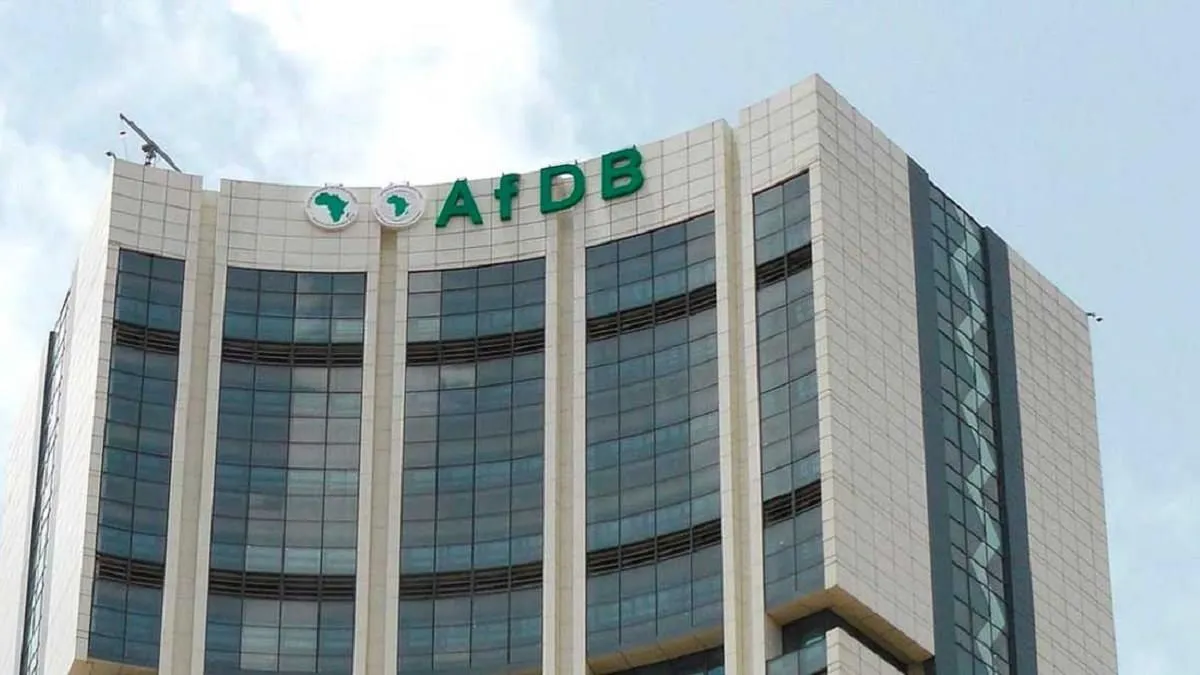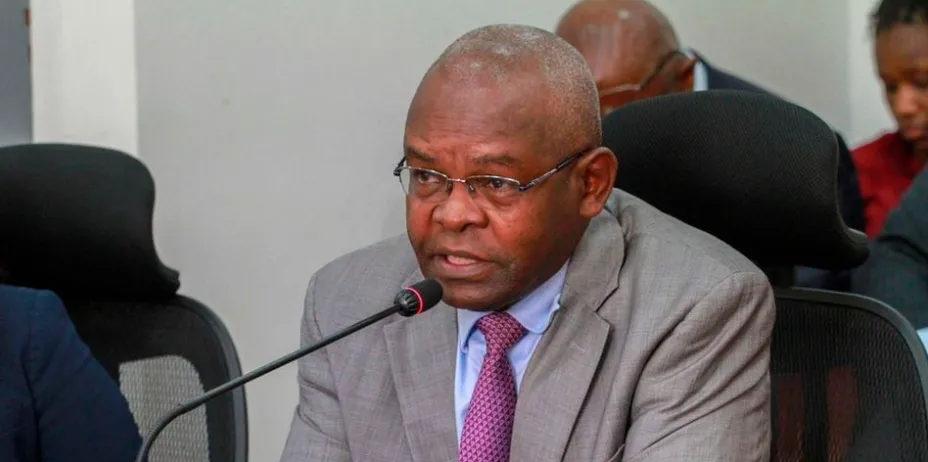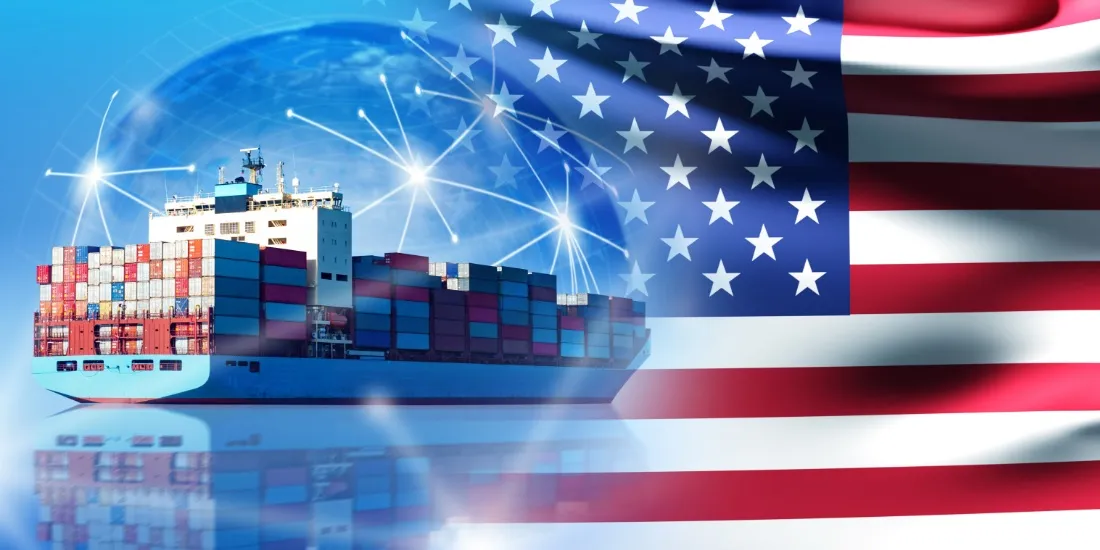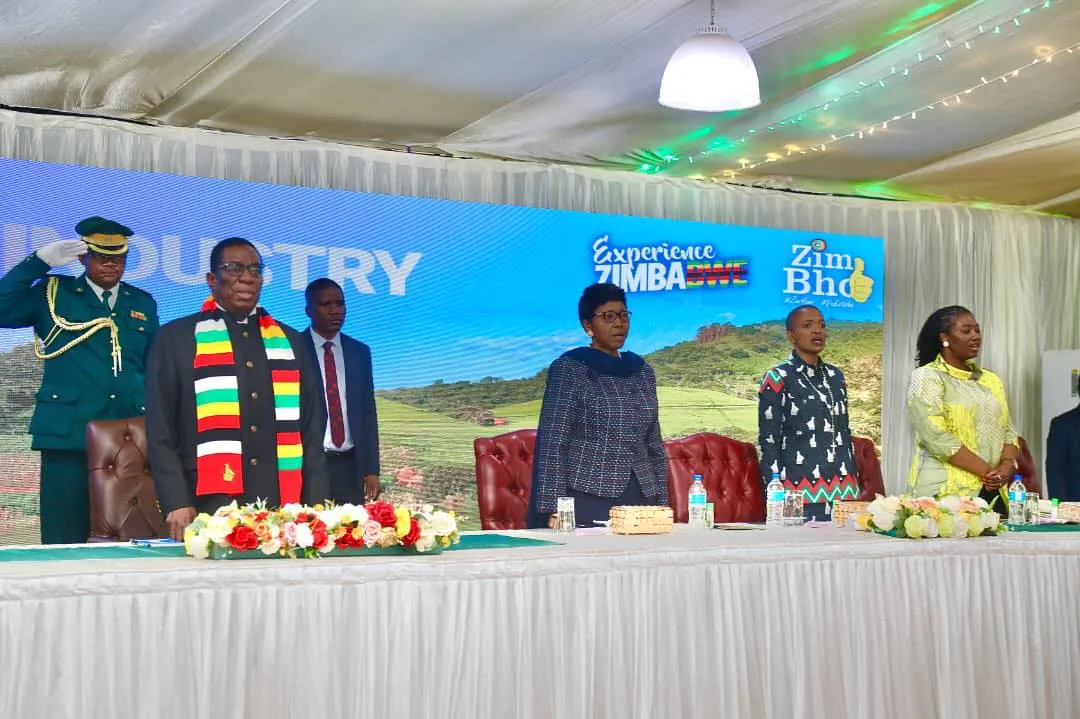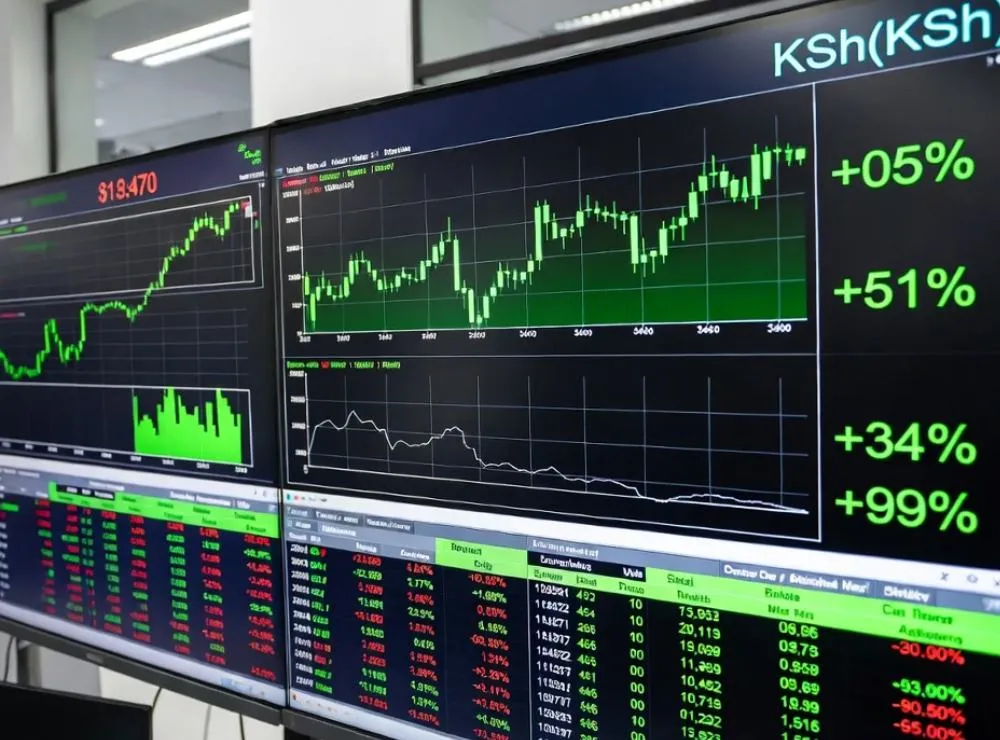In a pivotal moment for South Africa’s economic future, the African Development Bank (AfDB) has approved a substantial $474.6 million (approximately R8.8 billion) loan to support critical upgrades to the country’s transport and energy infrastructure. This significant financial injection, announced on Tuesday, July 1, 2025, arrives at a crucial juncture, signaling renewed confidence from international financial institutions in Pretoria’s ambitious infrastructure reform agenda.
The funding is designed to provide a much-needed boost for the nation’s broader efforts to revitalize public services, ease severe energy constraints, and lay the groundwork for long-term economic growth. It follows closely on the heels of another major infrastructure financing deal secured in June 2025: a $1.5 billion agreement with the World Bank. Together, these two substantial loans, alongside commitments from other multilateral partners, represent a powerful endorsement of the South African government’s determination to reverse years of underinvestment and inefficiencies in key sectors that have long hampered the economy.
In a statement, the AfDB emphasized that its contribution is part of a larger international financing package assembled to assist South Africa. According to Reuters, this comprehensive support includes the aforementioned $1.5 billion loan from the World Bank, €500 million ($590.75 million) from Germany’s KfW development bank, up to $200 million from the Japan International Cooperation Agency (JICA), and $150 million from the OPEC Fund for International Development.
The AfDB noted that the financing would directly support South Africa’s Economic Reconstruction and Recovery Plan (ERRP), a strategic blueprint aimed at improving infrastructure, stimulating economic growth, and fostering greater resilience in the face of persistent challenges, including chronic energy shortages and pervasive logistics inefficiencies.
The Crippling Grip: South Africa’s Decaying Infrastructure
For more than a decade, South Africa, once Africa’s most advanced economy, has struggled to expand, its growth hampered by systemic failures in core infrastructure. Persistent power cuts, decaying rail systems, and congested ports have become synonymous with the country’s economic woes, disrupting key sectors such as mining, automotive manufacturing, and agriculture.
Eskom and the Shadow of Load Shedding:
The state-owned power utility, Eskom, remains at the epicenter of South Africa’s energy crisis. For years, frequent breakdowns at its aging coal-fired power plants have led to widespread load shedding – scheduled power cuts that have crippled businesses and severely impacted daily life. The economic toll has been staggering. In 2023, rotational load shedding alone cost the South African economy an estimated R2.8 trillion (approximately $150 billion), making it the most intense year of power cuts on record. The South African Reserve Bank (SARB) estimated that load shedding shaved off 1.5 percentage points from GDP in 2023.
While South Africa has experienced a notable reprieve from load shedding since late March 2024, with over 300 consecutive days without power cuts between April and December 2024, the underlying challenges persist. This temporary relief has been attributed to improved maintenance and a slight increase in Eskom’s Energy Availability Factor (EAF), which averaged around 60% since the start of 2025, up from 55% in 2023. However, the Minerals Council South Africa noted in February 2025 that despite these improvements, electricity generation in 2024 remained 6.5% below pre-COVID-19 levels recorded in 2019. Warnings from experts, such as those in the 2025 Energy Market Projections report by Cresco and Standard Bank, suggest that without urgent acceleration of new energy projects, particularly in renewables, gas, and battery storage, a return to significant load shedding is highly probable. The report highlights that up to 4GW of Eskom’s coal generation could be unavailable by 2030 due to unplanned breakdowns or planned decommissioning.
Years of mismanagement, corruption, and financial strain at Eskom have resulted in a precarious financial position, limiting its ability to invest in much-needed maintenance and new capacity. The government passed the Eskom Debt Relief Act in June 2023 to keep the company afloat, covering R254 billion (approximately $13.5 billion) of its debt over three years, equivalent to 5.5% of South Africa’s GDP.
Transnet: The Logistics Bottleneck:
Equally debilitating are the challenges facing Transnet, the state-owned logistics firm responsible for South Africa’s ports, rail, and pipelines. Its failing rail infrastructure and severe port delays have choked exports and undermined business operations across the country. The company reported a R2.2 billion loss in the first half of the 2024/2025 financial year, exacerbated by a R136 billion debt burden.
The inefficiencies at Transnet are estimated to cost the South African economy over R1 billion daily. Key issues include:
- Rolling Stock Shortages: Insufficient numbers of operable trains.
- Decreased Operational Capacity and Performance: Leading to service delays.
- Network Vandalism and Theft: Particularly targeting copper cables, disrupting rail lines.
- Aged Equipment: Infrastructure that has not kept up with industry demand.
- Port Congestion: Leading to extensive delays at major ports like Durban, where container dwell times reached 48 hours for local and 50 days for over-border cargo in early 2025.
These logistics bottlenecks have directly impacted the growth potential of the country, with Investec Chief Economist Annabel Bishop estimating that Transnet’s incapacity has reduced South Africa’s GDP growth by around 3% per annum. Sectors like mining, which rely heavily on rail to transport commodities to ports for export, have been severely affected. For example, coal exports have been significantly curtailed due to rail inefficiencies, costing the country billions in lost revenue. The automotive sector, a major contributor to manufacturing, also faces disruptions due to port delays.
Billions Poured In: International Institutions Back South Africa’s Reforms
The approval of the $474.6 million AfDB loan arrives as a crucial component of a concerted effort by international financial institutions to support South Africa’s reform agenda. This collective backing signifies a strong vote of confidence in the government’s commitment to addressing its deep-seated infrastructure and economic challenges.
The AfDB’s Contribution:
The $474.6 million loan from the African Development Bank is specifically targeted at critical upgrades in the transport and energy sectors. The AfDB, as Africa’s premier development finance institution, plays a vital role in mobilizing resources for transformative projects across the continent. Its involvement underscores the strategic importance of South Africa’s economic stability for the broader African region.
A Coalition of Global Partners:
The AfDB’s intervention is part of a broader, multi-billion dollar international financing package:
- World Bank ($1.5 billion): Secured in June 2025, this loan from the World Bank is a significant commitment. While specific details of its allocation within South Africa’s infrastructure projects were not fully disclosed in the immediate news, World Bank loans typically support broad economic reforms, energy transition initiatives, and programs aimed at job creation and poverty reduction. Their involvement often comes with conditionalities tied to governance, transparency, and structural reforms, further reinforcing the need for South Africa to push through its reform agenda.
- Germany’s KfW Development Bank (€500 million / $590.75 million): KfW is Germany’s state-owned development bank, known for financing infrastructure, energy, and environmental projects in developing countries. Their €500 million contribution is likely directed towards specific green energy projects, energy efficiency initiatives, or transport infrastructure, aligning with both South Africa’s green growth ambitions and Germany’s focus on sustainable development.
- Japan International Cooperation Agency (JICA) (up to $200 million): JICA is Japan’s governmental agency that delivers the bulk of Japan’s Official Development Assistance (ODA). JICA’s past involvement in South Africa has included support for energy, transport, and human resource development. Their commitment of up to $200 million will likely target specific projects that enhance connectivity, energy supply, or industrial development, often with a focus on technological transfer and capacity building.
- OPEC Fund for International Development ($150 million): The OPEC Fund is a multilateral development finance institution that aims to foster South-South cooperation by providing financial assistance to developing countries. While specific projects for this loan were not detailed, the OPEC Fund’s historical engagement in South Africa has included support for financial services and health programs. This new infrastructure loan marks a strategic expansion of their support, reflecting the critical need for capital in these sectors.
This coordinated effort by multiple international financial institutions provides a robust financial safety net and a strong signal to private investors that South Africa is serious about its reforms and that its infrastructure projects are becoming more viable. The sheer volume of this funding is essential for addressing the scale of underinvestment that has accumulated over more than a decade.
The Road to Recovery: South Africa’s Economic Reconstruction and Recovery Plan (ERRP)
The international funding is inextricably linked to South Africa’s Economic Reconstruction and Recovery Plan (ERRP), a comprehensive strategy launched by the government in October 2020. The ERRP was designed as a direct response to the severe economic contraction exacerbated by the COVID-19 pandemic, aiming to stabilize the economy and create conditions for sustainable recovery.
The ERRP is structured around three interacting phases:
- Engage and Preserve: Focused on immediate responses, including a comprehensive health response to save lives and curb the spread of the pandemic, and measures to preserve livelihoods and distressed firms.
- Recovery and Reform: Interventions aimed at restoring economic activity while controlling health risks. This phase includes critical structural reforms.
- Reconstruct and Transform: The long-term vision of building a sustainable, resilient, and inclusive economy that addresses South Africa’s persistent challenges of inequality, unemployment, and poverty.
The plan identifies several key priority interventions and enablers, many of which directly relate to the infrastructure funding:
- Massive Rollout of Infrastructure: This is a cornerstone of the ERRP, recognizing that infrastructure investment is a primary driver of economic growth and job creation. The plan includes a list of 50 strategic infrastructure projects and 12 special projects, fast-tracked for immediate implementation, with an aim to unlock over R340 billion in new investment.
- A New Paradigm for Energy (Energy Security): Addressing Eskom’s crisis and ensuring reliable power supply is paramount. This involves restructuring Eskom, enabling private sector participation in power generation, and exploring diverse energy sources.
- Fast-tracking Reform Measures for a Competitive and Inclusive Economy: This includes modernizing and reforming network industries and associated state-owned enterprises (like Eskom and Transnet), and re-orienting trade policies to boost exports.
- Employment-Oriented Strategic Localization, Reindustrialization, and Export Promotion: Focusing on key sectors to revitalize mining and manufacturing, promoting tourism recovery, and growing the digital and green economies.
The AfDB’s loan and the broader international financing package directly support these ERRP objectives. By providing capital for infrastructure upgrades, these funds enable the government to implement critical projects that will enhance productivity, reduce the cost of doing business, and ultimately stimulate economic growth. The emphasis on modernizing SOEs like Eskom and Transnet is central to the ERRP’s success, as their inefficiencies have been a major drag on the economy.
Beyond the Billions: How Infrastructure Fuels Economic Growth
The infusion of hundreds of millions of dollars into South Africa’s infrastructure is not just about fixing broken systems; it’s about unlocking the nation’s latent economic potential. Reliable and efficient infrastructure is the backbone of any thriving economy, and its impact extends far beyond the immediate construction phase.
Economic Multipliers:
- Increased Productivity and Competitiveness: When businesses have access to reliable electricity, efficient transport networks, and well-functioning ports, their operational costs decrease. This makes South African goods more competitive in global markets, boosting exports and attracting foreign direct investment (FDI). For instance, consistent power supply allows factories to operate at full capacity, while efficient rail and port systems ensure timely delivery of raw materials and finished products, reducing lead times and logistical expenses.
- Job Creation: Infrastructure projects are inherently labor-intensive. The construction phase alone creates thousands of direct jobs for engineers, technicians, and laborers. Beyond this, improved infrastructure stimulates economic activity across various sectors, leading to indirect job creation in manufacturing, services, and supply chains. For example, a more efficient Transnet means increased mining output, which in turn creates jobs in mining, processing, and related services.
- Attracting Foreign Direct Investment (FDI): Investors consistently cite reliable infrastructure as a top criterion when deciding where to allocate capital. South Africa’s efforts to address its infrastructure deficits, backed by international financial institutions, send a strong signal of stability and commitment to growth, making the country a more attractive destination for FDI. This external capital is crucial for long-term economic development and technology transfer.
- Improved Quality of Life: While often discussed in economic terms, the benefits of infrastructure extend to the everyday lives of citizens. Reliable electricity means fewer disruptions for households, better access to education (e.g., for online learning), and improved healthcare services (e.g., consistent power for hospitals). Efficient public transport reduces commuting times and costs, enhancing overall quality of life.
Sector-Specific Catalysts:
- Mining: As a major global producer of platinum, coal, and other minerals, South Africa’s mining sector has been severely constrained by Transnet’s rail and port inefficiencies. Improved logistics will enable miners to transport greater volumes of commodities to export markets, boosting revenues and contributing significantly to GDP.
- Automotive Manufacturing: This sector relies on just-in-time supply chains and efficient port operations for importing components and exporting finished vehicles. Reduced port congestion and reliable transport will enhance the competitiveness of South Africa’s automotive industry.
- Agriculture: Farmers depend on reliable transport to get their produce to markets, both domestic and international. Improved rail and road networks, along with better port facilities, will reduce spoilage and increase market access for agricultural exports.
Deep-Seated Reforms: Unlocking Potential at Eskom and Transnet
The international funding is not merely a handout; it comes with an expectation, and indeed a requirement, for South Africa to push through long-overdue structural reforms at its beleaguered state-owned enterprises, Eskom and Transnet. Years of mismanagement, corruption, and financial strain have placed these entities at the center of South Africa’s economic woes.
Reforming Eskom:
Eskom’s reform agenda is multifaceted, aiming to stabilize its financial position and improve operational efficiency:
- Unbundling: A key reform is the unbundling of Eskom into three separate entities: generation, transmission, and distribution. This aims to improve efficiency, transparency, and accountability, and to facilitate greater private sector participation. The transmission company, in particular, is crucial as it will manage the national grid and procure power from various sources, including independent power producers (IPPs).
- Debt Relief: The government’s R254 billion debt relief package for Eskom is designed to clean up its balance sheet, making it more financially viable and attractive for future investment.
- Generation Recovery Plan: Eskom has been implementing a recovery plan since March 2023, focusing on improving the reliability of its existing coal fleet through enhanced maintenance and returning units to service. This has contributed to the recent reduction in load shedding.
- Private Sector Participation in Energy: Significant progress has been made in removing regulatory barriers to private sector generation. The complete removal of the licensing threshold for embedded generation has, for instance, enabled approximately R400 billion in new investments across over 130 projects, expected to add 22,500 MW to grid capacity over time. This decentralization of power generation is critical for long-term energy security.
- Delayed Decommissioning: Faced with immediate capacity shortages, the government has decided to delay the decommissioning of three coal-fired power stations (Camden, Grootvlei, and Hendrina) until 2030, providing a temporary buffer while new capacity comes online.
Restructuring Transnet:
Transnet’s reform efforts are focused on improving efficiency, reducing bottlenecks, and opening up the logistics sector to greater private participation:
- Corporatization of TNPA: The process of corporatizing the Transnet National Ports Authority (TNPA) is aimed at separating its functions from other divisions within Transnet to increase the competitiveness of South Africa’s ports. This is a crucial step towards allowing independent management and investment in port infrastructure.
- Rail Concessions and Third-Party Access: The government is pushing for reforms that will allow private operators to run trains on key rail routes and pay access fees, effectively ending Transnet’s monopoly on the rail network. This is expected to bring in much-needed private capital, expertise, and efficiency. Transport economist Dr. Johann van Rensburg noted that this is plausible if it accounts for maintenance and future upgrades.
- Addressing Operational Challenges: Transnet is focusing on improving operational efficiency, optimizing resource allocation, and addressing issues like rolling stock availability and network vandalism. Investments in new equipment, such as straddle carriers at Durban Port, are part of this effort.
- Debt Restructuring: Transnet’s significant debt burden is a major concern. The restructuring of Transnet into a state-owned infrastructure provider, with private operators running trains, is part of a broader strategy to manage this debt and ensure long-term financial sustainability.
These reforms are not quick fixes; experts estimate that major upgrades and their benefits will take five to 15 years to fully materialize. However, immediate improvements in areas like port turnaround times and unblocking key freight corridors could show results in under 36 months. The international funding serves as a powerful incentive and enabler for the government to accelerate these long-overdue restructuring efforts.
The AfDB’s Mandate: Powering Africa’s Development
The African Development Bank’s intervention in South Africa is consistent with its broader mandate and strategic priorities across the continent. As Africa’s premier development finance institution, the AfDB is dedicated to spurring sustainable economic development and social progress in its regional member countries.
The AfDB’s “High 5s” strategic priorities include:
- Light up and Power Africa: A strong focus on energy infrastructure, including renewable energy, to address power deficits.
- Feed Africa: Enhancing agricultural productivity and food security.
- Industrialize Africa: Promoting industrialization and value addition.
- Integrate Africa: Fostering regional integration through cross-border infrastructure and trade.
- Improve the Quality of Life for the People of Africa: Through investments in social infrastructure and human capital.
The loan to South Africa directly aligns with the “Light up and Power Africa” and “Integrate Africa” priorities, given its focus on energy and transport infrastructure. The AfDB recognizes that South Africa, as a major economic powerhouse on the continent, plays a crucial role in regional stability and growth. Its economic health has spillover effects on neighboring countries, making investments in its core infrastructure a strategic imperative for broader African development. The AfDB’s support is not just about financial aid but also about providing technical expertise, policy advice, and facilitating regional cooperation to ensure that infrastructure projects deliver maximum impact.
Conclusion: A Foundation for a More Resilient Future
The $474.6 million loan from the African Development Bank, coupled with the broader international financing package totaling billions, marks a critical turning point for South Africa. It represents a potent blend of financial support and a strong vote of confidence from global institutions in the country’s commitment to fundamental economic reforms.
While South Africa faces formidable challenges – decades of underinvestment, operational inefficiencies at key state-owned enterprises, and the persistent threat of power and logistics crises – the current momentum for change is undeniable. The government’s Economic Reconstruction and Recovery Plan provides a clear roadmap, and the international community’s willingness to provide substantial backing underscores the belief that South Africa is on the right track.
These funds are not merely for patching up old systems; they are intended to drive urgently needed upgrades and push long-overdue restructuring, particularly at Eskom and Transnet. By investing in reliable energy and efficient transport networks, South Africa aims to reduce the cost of doing business, enhance its competitiveness, attract more private and international capital, and ultimately create jobs and improve the quality of life for its citizens.
The path ahead will undoubtedly require sustained political will, diligent execution, and continued collaboration between the government, private sector, and international partners. However, with this latest round of significant funding, South Africa has gained vital momentum in its efforts to restore its critical infrastructure, stabilize its economy, and lay a robust foundation for a more inclusive, resilient, and prosperous future. The world is watching, and the message from Pretoria is clear: South Africa is open for business, and it is rebuilding for growth.
Ready to take your career to the next level? Join our dynamic courses: ACCA, HESI A2, ATI TEAS 7 , HESI EXIT , NCLEX – RN and NCLEX – PN, Financial Literacy!🌟 Dive into a world of opportunities and empower yourself for success. Explore more at Serrari Ed and start your exciting journey today! ✨
photo source: Google
By: Montel Kamau
Serrari Financial Analyst
2nd July, 2025
Article, Financial and News Disclaimer
The Value of a Financial Advisor
While this article offers valuable insights, it is essential to recognize that personal finance can be highly complex and unique to each individual. A financial advisor provides professional expertise and personalized guidance to help you make well-informed decisions tailored to your specific circumstances and goals.
Beyond offering knowledge, a financial advisor serves as a trusted partner to help you stay disciplined, avoid common pitfalls, and remain focused on your long-term objectives. Their perspective and experience can complement your own efforts, enhancing your financial well-being and ensuring a more confident approach to managing your finances.
Disclaimer: This article is for informational purposes only and does not constitute financial advice. Readers are encouraged to consult a licensed financial advisor to obtain guidance specific to their financial situation.
Article and News Disclaimer
The information provided on www.serrarigroup.com is for general informational purposes only. While we strive to keep the information up to date and accurate, we make no representations or warranties of any kind, express or implied, about the completeness, accuracy, reliability, suitability, or availability with respect to the website or the information, products, services, or related graphics contained on the website for any purpose. Any reliance you place on such information is therefore strictly at your own risk.
www.serrarigroup.com is not responsible for any errors or omissions, or for the results obtained from the use of this information. All information on the website is provided on an as-is basis, with no guarantee of completeness, accuracy, timeliness, or of the results obtained from the use of this information, and without warranty of any kind, express or implied, including but not limited to warranties of performance, merchantability, and fitness for a particular purpose.
In no event will www.serrarigroup.com be liable to you or anyone else for any decision made or action taken in reliance on the information provided on the website or for any consequential, special, or similar damages, even if advised of the possibility of such damages.
The articles, news, and information presented on www.serrarigroup.com reflect the opinions of the respective authors and contributors and do not necessarily represent the views of the website or its management. Any views or opinions expressed are solely those of the individual authors and do not represent the website's views or opinions as a whole.
The content on www.serrarigroup.com may include links to external websites, which are provided for convenience and informational purposes only. We have no control over the nature, content, and availability of those sites. The inclusion of any links does not necessarily imply a recommendation or endorsement of the views expressed within them.
Every effort is made to keep the website up and running smoothly. However, www.serrarigroup.com takes no responsibility for, and will not be liable for, the website being temporarily unavailable due to technical issues beyond our control.
Please note that laws, regulations, and information can change rapidly, and we advise you to conduct further research and seek professional advice when necessary.
By using www.serrarigroup.com, you agree to this disclaimer and its terms. If you do not agree with this disclaimer, please do not use the website.
www.serrarigroup.com, reserves the right to update, modify, or remove any part of this disclaimer without prior notice. It is your responsibility to review this disclaimer periodically for changes.
Serrari Group 2025












